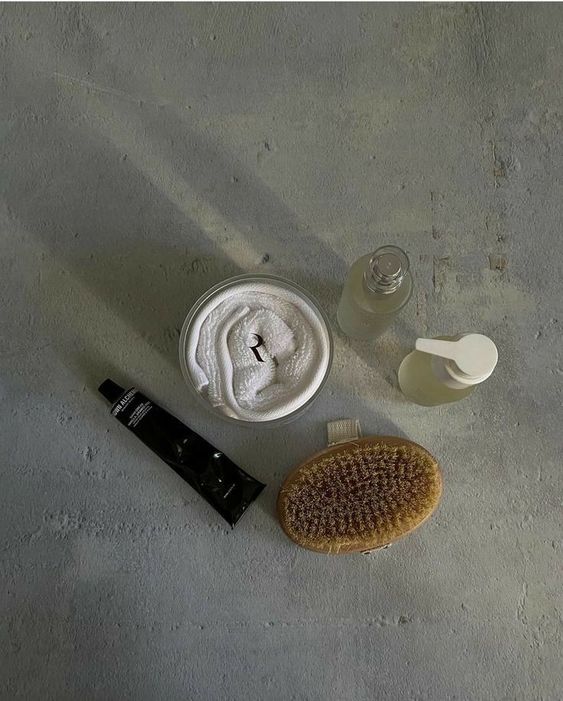
Hyperpigmentations have an interesting duality: they are like your best friend and your worst enemy at the same time. Once you get them, they will always “be there for you” like a close buddy and, acting as your nemesis, they will make your life miserable by striping your skin of its natural radiance and destroying your self-esteem. We know how difficult it is to get rid of hyperpigmentations. We hear so many horror stories of severe side effects caused by hyperpigmentation treatments that many people are left wondering if they should take the risk or remain the same. We believe that those who are affected by this condition should definitely do something about it, but it is better to be fully informed before making such a life-changing decision. We, at Rosafa, wave the educational flag, we have specifically dedicated this post to those who want to learn what hyperpigmentations are, their different types, as well as strategies that effectively target them.
Hyperpigmentation On Your Skin: Defined and Deconstructed
Hyperpigmentations or hyperchromias are a type of dyschromia, discoloration or lack of uniformity of the color of the skin, that includes all disorders in which dark patches develop on the skin[1]. The common denominator in all types of hyperpigmentations is increased melanin production alongside an altered distribution of this pigment[1].
The 6 Different Pigmentation Types Defined & Explained
According to their distribution, hyperpigmentations can be either[2]:
1. Focal or localized: isolated patches
2. Diffuse or generalized: cover a large area
Based on the depth of the pigment, dark spots can be classified as follows[3][4]:
- Epidermal melanosis: excess melanin is produced by the melanocytes located at the basal stratum of the epidermis and accumulates on the top layers of the skin. Their color is dark brown and responds well to topical treatment. Examples: melasma, age spots, tanning.
-
Dermal melanosis: excess melanin is located in the dermis between collagen fibers. These
spots have a brown-gray hue and are commonly observed in people with darker phototypes, particularly Asian.
Examples: drug-induced, post-inflammatory hyperpigmentation, birthmarks (Mongolian spot and nevus of Ota and Ito).
Generally speaking, they are not responsive to topicals and can be formed due to four phenomena:
a) Epidermal melanin that leaks into the dermis
b) Excess melanin produced by dermal melanocytes
c) Some melanocytes from the neural crest failed to migrate to the epidermis during the embryonic stage.
d) Non-melanic pigmentation formed as a consequence of long-term hydroquinone treatment (exogenous ochronosis)
These lesions can come in many shapes and forms. As it could literally takes us a whole encyclopedia lo list them all, we have decided to describe the most common ones[5][6][7]:
- Melasma or chloasma: it appears as large, dark brown and symmetrical patches on the face. Since it is heavily influenced by the action of natural and synthetic hormones (birth control pills), it is more frequent in women particularly those who are expecting. During this stage, melasma is also known as “the mask of pregnancy”.
- Age spots, liver spots or lentigines: these spots are flat, oval and have a red-brown color. Contrary to popular belief, these spots are not related to altered liver function. Professionals started referring to them that way because it was believed that the liver was their underlying cause, plus their hue is also similar to that organ. They are common in fair-skinned people and usually increase in number/size with age or after sun exposure (solar lentigines). As you can expect, they normally occur on UV-damaged areas such as the arms, face, and hands.
- Ephelides or freckles: these pigmented lesions are small, flat with a light brown color. They are related to sun exposure and can form everywhere on the body. There is a genetic component to their formation too, as they run in families with fair skin and blond/red hair.
- Post-inflammatory hyperpigmentation (PIH): as its name clearly indicates, this type of pigmentation is caused by inflammatory conditions. When inflammation is present, the epidermal melanocytes are stimulated into secreting more melanin as a protective measure. If the basal layer suffers considerable damage, melanin will be released into the dermis. The spots that result from PIH are quite different: general tanned look, as in Addison’s disease; thick and super dark spots, as observed in acanthosis nigricans; and the characteristic red-brownish marks of acne.
What Causes Dark Spots On The Face & Body?
[2][5]Hyperpigmentations are associated with multiple causes. In order to make them easier for you to understand, we have broken them down based on their distribution:
- Focal
- Sun exposure
- Genetics: Fitzpatrick skin types 4 and higher have greater predisposition.
- Hormonal imbalances: acanthosis nigricans (insulin resistance), excess estrogen and progesterone levels (like those experienced during pregnancy).
- Inflammatory processes: acne, cuts, burns, eczema, lupus, psoriasis, infections, photodermatitis and other allergic reactions.
- Diffuse
- Cancer: lung carcinomas, malignant melanoma and metastatic disease.
- Drugs: antimalarials, amiodarone (antiarrhythmic), antipsychotic drugs, cytotoxic drugs, heavy metals (like mercury), non-steroidal anti-inflammatory drugs (NSAIDs), oral contraceptives, phenytoin (anti-seizures), tetracyclines (antibiotics) and photosensitizing medications (isotretinoin, psoralens, sulfonamides, etc.).
- Medical conditions: Addison’s disease (adrenal insufficiency), thyroid disorders, insulin resistance (produces acanthosis nigricans), hemochromatosis (excessive iron accumulation), primary biliary cholangitis (autoimmune disease that destroys the intrahepatic bile ducts), etc. It is important to clarify that liver disorders produce yellowish skin and mucous membranes, but not brownish discolorations.
- Metabolic disorders: folic acid and vitamin B12 deficiencies.
The Hyperpigmentation Cascade: What You Need To Know
[1]There is a very specific sequence of events that take place before melanin levels are released in both the epidermis and the dermis. This process is called the melanogenesis pathway, which explains how the various treatments work at blocking this process and brightening the pigment that has already been depositioned.
- One or several melanin-stimulating factors (UV radiation, drugs, inflammation, etc.) cause the melanocyte-stimulating hormones (MSH) to be released by the anterior and intermediate lobes of the pituitary gland.
- MSH, in turn, stimulates the release of tyrosinase inside the melanosomes, which are the structures inside the melanocytes wherein melanin pigments are produced and stored. Tyrosinase is the enzyme that breaks down the amino acid tyrosine. The latter is a precursor of melanin.
- Tyrosine then undergoes several reactions that produce different melanin precursors, such as L-DOPA and DOPAquinone, before resulting in eumelanin. This is the predominant melanin in brown and black hair.
- There is a second melanin pathway that results from the breakdown of the amino acid cysteine. This amino acid is one of the main constituents of the antioxidant powerhouse glutathione. The melanin derived from this pathway is called pheomelanin, which is abundant in both red hair and reddish areas like the lips.
Follow These Steps For Your Dark Spots Treatment
[1][8][9][11]The successful treatment of hyperpigmentations should be seven-fold as they are caused by multiple factors and involve several stages in order to be fully formed. Thus, a functional protocol should look as follows:
- Application of tyrosinase inhibitors: arbutin, azelaic acid, green tea, glutathione, hydroquinone, kojic acid, mulberries, licorice, retinoids, silymarin, tranexamic acid, wild bellis perennis (daisy extract), or vitamin C in all its forms.
- Application of active ingredients that inhibit the transfer of melanin through the melanosomes: niacinamide, retinoids, soy, and wild bellis perennis (daisy extract).
- Application of antioxidants that ward off inflammation and break down excess pigment: ellagic acid, green tea, mulberries, turmeric, and vitamin C. Foods packed with antioxidants can also boost UV protection from the inside-out.
- Application of active ingredients or technologies that stimulate cell turnover: alpha hydroxy acids, beta hydroxy acids, polyhydroxy acids, microneedling, IPL, lasers and radiofrequency.
- Sun protection: preferably with a mineral broad spectrum sunscreen formulated with titanium dioxide and zinc oxide; remember to reapply every 2 hours. You should also wear sunglasses, a broad-brimmed hat, and seek the shade whenever possible.
- Address the underlying cause: avoid/protect against sun exposure, balance hormonal levels, discontinue melanin-inducing drugs (if possible), treat metabolic disorders/medical conditions, etc.
- If you suffer from breakouts or itchiness, leave your skin alone. This might sound like an impossible task, but PIH will be more difficult to tackle if you are continuously picking at and scratching the skin.
Ideally, your skincare routine should contain one ingredient of each of the categories 1-4, plus a natural/organic sunscreen. Hydroquinone now needs to be prescribed by physicians in the USA as lightning OTC formulas have been outlawed. Due to its potential side effects, such as permanent damage to the melanocytes and loss of natural skin pigment, hydroquinone has been banned in the European Union. Retinoids and arbutin should not be used by pregnant or breastfeeding women.
A word of caution about light-based treatments, IPL is not suitable for darker skin tones (Fitzpatrick skin phototypes IV-VI). Instead, look for Nd:YAG lasers (1064 nm wavelength) as they bypass the epidermal layer so that melanin does not absorb the energy, thus producing a skin injury.
Thispigmentation laser treatment
results in safe breakdown of the excess pigment and tissue resurfacing. A similar effect can be achieved with radiofrequency, which uses radio waves to heat the skin. All the aforementioned measures can also be used to prevent both dark spots and uneven skin tone.You can kiss
skin with dark spots
goodbye, but remember this is a multiple-fold process that will require tons of commitment, discipline, patience and support. Yes, in most cases, you will need to be guided by a highly seasoned professional to make sure there are no loose ends in every step of the way. Hormonal balance, proper nutrition, genetic factors and quality skincare can't be taken for granted. There will be ups and downs, so it is important to stay focused and reduce your stress levels to avoid exacerbating the inflammatory aspect ofdark spots on skin
.Stay motivated by reminding yourself that, each day, you are getting closer to your goal: healthy, glowy and brighter skin. To learn more tips and tricks about your skin, make sure to follow us on Instagram, Facebook, Pinterest, and Linkedin!
References:
[1] https://onlinelibrary.wiley.com/doi/10.1111/pcmr.12986?af=R
[2] https://www.ncbi.nlm.nih.gov/pmc/articles/PMC4142815/
[3] https://onlinelibrary.wiley.com/doi/pdf/10.1111/jdv.12048
[4] https://www.actasdermo.org/es-melanocitosis-dermicas-articulo-13017965
[6] https://www.aocd.org/page/Hyperpigmentation
[7] https://dermnetnz.org/topics/postinflammatory-hyperpigmentation
[8] https://onlinelibrary.wiley.com/doi/full/10.1111/j.1468-2494.2010.00616.x




